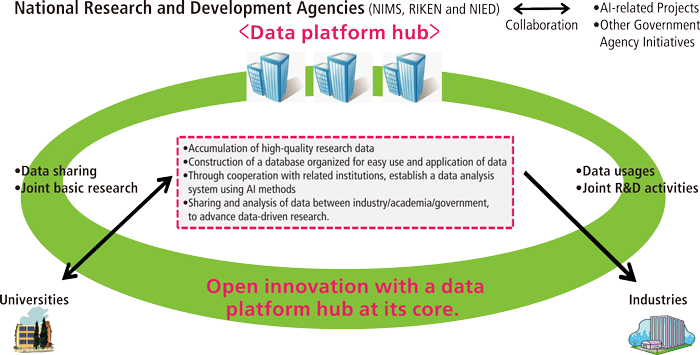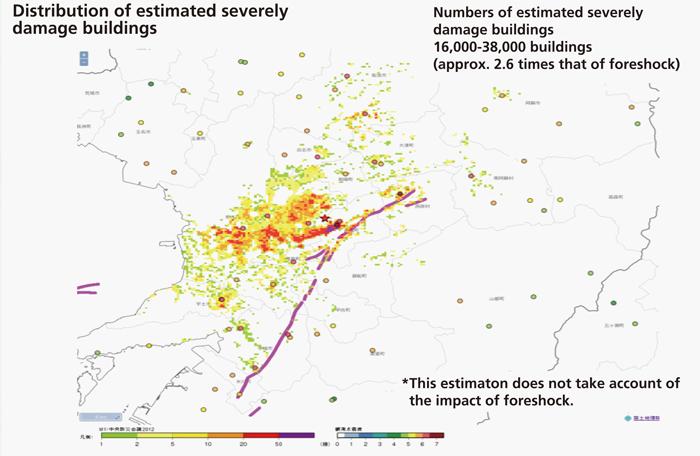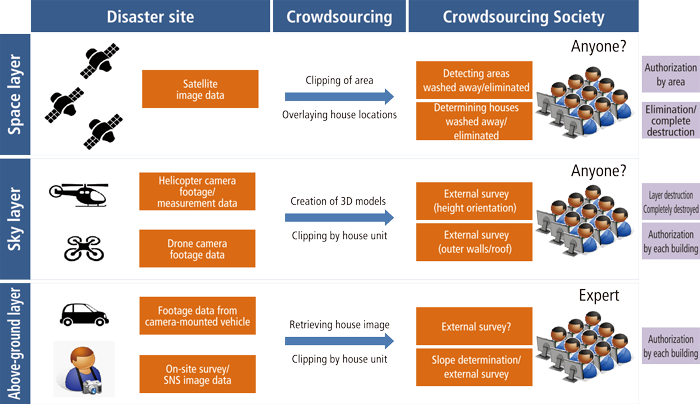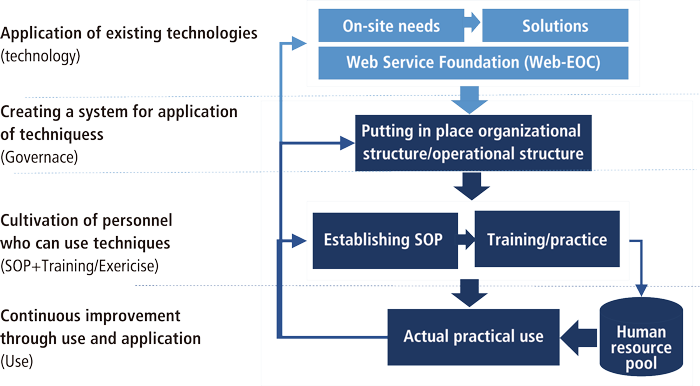R&D Activities - Subprojects(a)
Social science field Aiming to enhance response capability
Constructing a cooperative framework for use and application of data conducive to improving comprehensive resilience focused on the Tokyo Metropolitan area.
Carry out "Establishment of industry-government-academia collaborative council to expedite data utilization conducive to mitigate damage" and "Extraction of technical issues for early recovery and reconstruction of urban functions using data" with the aim of improving "Damage mitigation capabilities/disaster response capabilities for urban disasters which cause significant damage" and "Business continuity capabilities for early recovery and reconstruction".
Subproject (a) oversees the cooperative framework with a view to "Integration and utilization of collected, generated, and accumulated data and research results by Subprojects (b) and (c)".
Research Themes
1
Coordination of subproject (a) / establishment/management of Data Use and Application Council for Resilience
Support activities for project supervision, and implement management for constructing a research framework under which researchers participating in the project and officers participating from the council can move beyond the bounds of their organizations, and promote optimal research activities to realize a society with a high level of disaster resilience. Furthermore, establish an industry-government-academia-private sector deliberation council to construct a collaborative framework for data utilization, and for implementing/verifying the deliberation of rules regarding provision/mutual usage. Subproject (a) will also deliberate policy for the deployment into society of the framework for the data utilization required for disaster resilience.

2
Consideration of data distribution policy using information infrastructure
Consideration of a data distribution policy to establish an environment conducive to the safe and reliable distribution, use and application of the huge body of diverse data required for resilience. This includes data collected/generated/stored under Subprojects (b) and (c), and data provided and shared among the various participants in the deliberation council. Concretely, this will involve the standardization of data formats, deliberation of policies for sharing of use cases for which data provision could confer benefit, and the application / implementation of the information infrastructure foundation already owned by NIED.

3
Consideration of fragility functions for preventing damage from spreading
PI: Nobuoto Nojima, Professor, Gifu University
Clarifing and refining the damage probability of buildings and infrastructures based on the relationship between hazards and induced damage, we promote the strategy for mitigating damage in both disaster response and pre-event phases. Based on research results obtained since the Hanshin Awaji Earthquake Disaster and applying data from the 2016 Kumamoto Earthquake, we are examining both aspects of damage to residential buildings and to infrastructures. At the time when it is difficult to grasp the damage situation immediately after the disaster, we establish the model to quickly estimate the damage scale based on observed hazard information.

4
Consideration of techniques for comprehending damage to enhance disaster response capability
In the even of a Tokyo Metropolitan area disaster, the amount of damage would be enormous, and much time would be required to ascertain where individual damage has occurred. This project will identify technical issues for speeding up the forming and sharing of a common operational picture among disaster response organizations, and will deliberate how to resolve these issues. Concretely, we will identify and consider specific technical issues in response to the need for more precise comprehension of damage, including methods for surveying damage in heavily damaged regions through batch authorization, new survey methods through coordinated linkages between both air and land and data integration, and methods for the effective distribution of human and material resources based on survey results.

5
Establishing work procedures to improve business continuity capability
PI: Reo Kimura, Professor, School of Human Science and Environment, University of Hyogo
In order to keep damage and loss to the absolute minimum, each and every organization including disaster response organizations must continue their core work procedures from normal times while also implementing the extraordinary tasks that are necessary in the event of a disaster, in order to ensure a swift response and to enable swift rehabilitation. In order to expedite business continuity, we should extract, analyze and deliberate best practices from past disasters to clarify technical issues for establishing SOP (Standard Operating Procedure) for organizations and institutions. Following this, we will propose measures for resolving these issues.


